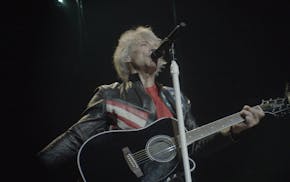The debate ramps up at this time of year: Do heated birdbaths pose a danger to birds on really cold days?
One camp says birds are too smart to immerse themselves on very cold days, when wet feathers might ice up or cold water on skin could cause hypothermia.
The other side says birds sometimes splash around, no matter what the air temperature, and advocates barriers so birds can drink but not bathe when it's very cold.
I've been going back and forth on this issue, as have many others, with even some national bird conservation organizations changing their advice over time.
It's true, birds are smart — they have been surviving winters for eons and they do need water to drink in winter.
But then I heard from Tami Vogel, a dedicated bird watcher in Afton:
"I always thought freezing birds [after bathing in a birdbath] was a myth, until one evening I picked up six cardinals, all unable to fly because their feathers had frozen and they literally could not extend their wings."
Vogel had been looking out a window, enjoying the sight of some two dozen cardinals feeding in her backyard at dusk. One bird decided to take a late bath, and then several others followed suit.
Noting a number of birds acting strangely after leaving the birdbath, Vogel rushed outdoors. "I was able to just pick them up and bring them inside," she says. After the ice melted from their feathers and they warmed up (inside boxes), she released the cardinals back outdoors.
"Now I cover the birdbath with boards across the middle in winter, leaving just the edges for drinking," she noted.
Some sites on the internet swear that birds won't bathe when it's dangerously cold. But Vogel's experience describes a different reality and I found it so chilling that it settled this issue for me — I'm putting a board across my birdbath in winter, too.
After mulling why birds might bathe when it's dangerous to do so, it occurred to me that while birds are savvy and dedicated to survival, maybe heated birdbaths send the wrong signals and lull them into a false sense of security. Their brains tell them that if there's open water, then it's warm enough to bathe. They don't know about the artificial environment created by a birdbath heater. So they go about their usual habits, but using the usual cues could be their undoing.
Too cold to bathe
The Wildlife Rehabilitation Center in Roseville advises that bathing is dangerous to birds when temperatures reach single digits or lower.
Don Grussing, a local writer (author of the wonderful "The Seasons of the Robin," available on Kindle) and bird-watcher, says he's always had doubts about heated birdbaths.
"Birds have been doing just fine in the winter without heated baths," he noted, adding that he's seen chickadees and house finches "bathing" in snow and has observed local birds eating snow when water isn't available.
Few of us see as brutal an outcome as Vogel did, because many birds that bathe on cold days are able to fly away from a birdbath, but ice may form when they perch to preen.
As Vogel concluded, "This was the first time I'd seen this, but I'm sure it's not the first time it has occurred — I just happened to be there."
Birds do appreciate a source of open water in winter. But let's "be there" for our backyard birds by placing boards or another barrier over heated birdbaths to allow birds to drink, but not bathe, in winter.
St. Paul resident Val Cunningham, who volunteers with the St. Paul Audubon Society and writes about nature for local, regional and national newspapers and magazines, can be reached at valwrites@comcast.net.
Birdbath barriers
Here's a good tip from Carol Chenault, manager of the All Seasons Wild Bird Store in Minnetonka: Place evergreen boughs across the birdbath, replacing them from time to time. She suggests sawing off a couple of limbs before discarding your Christmas tree, using one now and saving the other for later in the winter. She also notes that using several wooden slats over the basin can prevent birds from bathing.

The Biden administration is tweaking rules on airline fees and refunds, saying it'll help consumers

3 hearty salads to kick off salad season
Ask Amy: Late mom's behavior still an issue

TV review: Bon Jovi documentary goes down in a blaze of boredom

